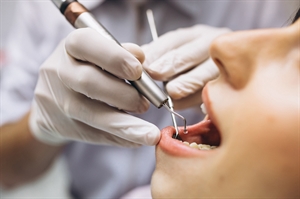All Categories
Featured
Table of Contents
In West Hempstead, NY, Elizabeth Bradshaw and Maxwell Wiggins Learned About Things To Do In Frederick Md
What Is Preventive Dental Care? Dental care is one of the most essential health maintenance tasks we perform in life. While we may not be interested in a clean and white smile, most of us do not have the time or money to visit the dentist regularly. While there are dental clinics available around every corner, most of them cater to the need of private individuals and not the public at large. There are some ways you can achieve proper dental care while remaining within your budget. When you are younger, your teeth can be very delicate so proper oral hygiene is essential. This means that you should brush and floss every day. It is also a good idea to visit your dentist at least once a year for checkups and cleanings. Your dentist will be able to take a look at your teeth and tell you what they think needs to be done. Tooth decay and bad breath are very common. When they are left untreated, it can cause an infection. If you do not take care of your teeth properly, they can easily become decayed. If you are looking to stop this problem, then you will need to make sure that your teeth are maintained properly. Dental hygiene involves regular brushing and flossing. It also includes regular cleaning of the dental cavities. Your dentist will recommend a specific brushing routine for the various types of tooth enamel. Brushing removes plaque and tartar from the teeth and gums while flossing removes food particles and plaque. One of the most common types of problem is tooth decay. If your teeth become infected with tartar, then they will begin to rot. This is also a sign that it is time for your dentist to come out and perform a cleaning. Your dentist can remove the plaque and tartar so that your teeth and gums will stay healthy and clean. In general, dental diseases affect people of all ages. Teeth may wear out faster during the first few years of life, as a result of tooth decay. However, teeth may also wear out more quickly due to the effects of gravity, resulting in cavities and gum disease. Dental problems may be more likely to occur if you smoke, drink coffee or tea, or have diabetes or heart disease. You should always remember that oral health is very important. You want your mouth to be free of bacteria and other things that can cause infections. You should always brush, floss and use a fluoride mouthwash to keep your mouth healthy. Periodontal disease, as an example, can be controlled and even eliminated with regular visits to the dentist. This type of dental problem is less common than cavities and gum disease. So, if you or your family has experienced any of these conditions, you may want to schedule an appointment to have your teeth cleaned. Some dentists offer dental health care as part of their overall practice. You can select a dentist that is able to offer the comprehensive treatment that is required for your specific problem. Before you make your decision, ask your dentist about your oral health history and any symptoms that you may have. Bacteria can build up and can cause tooth decay. This will lead to gum disease, if your dentist does not remove the bacteria from the teeth. If you do not brush your teeth often enough or do not brush at all, your teeth can get covered with bacteria. Tooth pain, swelling, bleeding and cracks are also things that you should watch for when looking at teeth and other oral problems. You should see your dentist as soon as possible. Dental clinics use a variety of different methods to treat these problems. Most clinics offer dental procedures, including cleaning, scaling and filling. You will probably have your teeth cleaned by a professional dentist to remove the bacteria and plaque from the teeth. Tooth grinding, which is a common cause of cavities, may require root canal treatment. You will need to visit a dentist to determine what steps need to be taken to prevent tooth loss. If tooth grinding is a result of tooth decay, your dentist may prescribe antibiotics and other medications to help with the problem.
City in Maryland, United StatesFrederick, MarylandCity of FrederickBridge on Carroll CreekMotto( s): "The City of Clustered Spires" Location within the State of MarylandShow map of MarylandFrederick (the United States) Show map of the United StatesCoordinates: Coordinates: United States Founded1745Government MayorMichael O'Connor (D-MD) Board of AldermenKelly Russell (D-MD) Ben MacShane (D-MD) Derek Shackleford (D-MD) Donna Kuzemchak (D-MD) Roger Wilson (D-MD) Area City24.
28 km2) Land23. 95 sq mi (62. 02 km2) Water0. 10 sq mi (0. 26 km2) Elevation302 ft (92 m) Population City65,239 Estimate 72,244 Density3,016. 95/sq mi (1,164. 84/km2) Urban141,576 (US: 230th)UTC5 (EST) Summer (DST)UTC4 (EDT) 21701-21709301, 24024-30325GNIS function ID0584497I-70, I-270, United States 15, United States 40, US 340, MD 80, MD 144, MD 355Website Frederick is a city in, and the county seat, of Frederick County, Maryland.
Frederick has long been an essential crossroads, situated at the crossway of a significant northsouth Indian trail and eastwest paths to the Chesapeake Bay, both at Baltimore and what ended up being Washington, D.C. and throughout the Appalachian mountains to the Ohio River watershed. It is a part of the Washington-Arlington-Alexandria, DC-VA-MD-WV Metropolitan Statistical Location, which is part of a higher Washington-Baltimore-Arlington, DC-MD-VA-WV-PA Combined Statistical Location.
Frederick is house to Frederick Municipal Airport (IATA: FDK), which accommodates general aviation, and to the county's biggest employer U.S. Army's Fort Detrick bioscience/communications research study setup. Found where Catoctin Mountain (the easternmost ridge of the Blue Ridge mountains) fulfills the rolling hills of the Piedmont area, the Frederick area became a crossroads even prior to European explorers and traders got here.
This ended up being referred to as the Monocacy Trail or perhaps the Great Indian Warpath, with some travelers continuing southward through the "Terrific Appalachian Valley" (Shenandoah Valley, and so on) to the western Piedmont in North Carolina, or taking a trip down other watersheds in Virginia toward the Chesapeake Bay, such as those of the Rappahannock, James and York Rivers.

Founded prior to 1730, when the Indian trail became a wagon road, Monocacy was abandoned before the American Revolutionary War, perhaps due to the river's periodic flooding or hostilities predating the French and Indian War, or just Frederick's much better location with much easier access to the Potomac River near its confluence with the Monocacy.
Three years earlier, All Saints Church had been founded on a hilltop near a warehouse/trading post. Sources disagree as to which Frederick the town was called for, however the likeliest prospects are Frederick Calvert, 6th Baron Baltimore (one of the owners of Maryland), Frederick Louis, Prince of Wales, and Frederick "The Great" of Prussia.
Frederick Town (now Frederick) was made the county seat of Frederick County. The county initially reached the Appalachian mountains (locations further west being challenged between the nests of Virginia and Pennsylvania till 1789). The present town's first home was developed by a young German Reformed schoolmaster from the Rhineland Palatinate called Johann Thomas Schley (passed away 1790), who led a celebration of immigrants (including his other half, Maria Von Winz) to the Maryland colony.
In Opa Locka, FL, Samantha Frey and Eliana Knox Learned About Frederick Md Events Next 14 Days
Schley's inhabitants likewise established a German Reformed Church (today referred to as Evangelical Reformed Church, and part of the UCC). Most likely the earliest home still standing in Frederick today is Schifferstadt, integrated in 1756 by German settler Joseph Brunner and now the Schifferstadt Architectural Museum. Schley's group was among the lots of Pennsylvania Dutch (ethnic Germans) (as well as Scots-Irish and French and later Irish) who migrated south and westward in the late-18th century.
Another important route continued along the Potomac River from near Frederick, to Hagerstown, where it divided. One branch crossed the Potomac River near Martinsburg, West Virginia and continued down into the Shenandoah valley. The other ongoing west to Cumberland, Maryland and ultimately crossed the Appalachian Mountains into the watershed of the Ohio River.
However, the British after the Pronouncement of 1763 restricted that westward migration path till after the American Revolutionary War. Other westward migrants continued south from Frederick to Roanoke along the Great Wagon Road, crossing the Appalachians into Kentucky and Tennessee at the Cumberland Space near the Virginia/North Carolina border. Other German inhabitants in Frederick were Evangelical Lutherans, led by Rev.
They moved their objective church from Monocacy to what ended up being a large complex a few blocks further down Church Street from the Anglicans and the German Reformed Church. Methodist missionary Robert Strawbridge accepted an invite to preach at Frederick town in 1770, and Francis Asbury got here two years later on, both assisting to found a congregation which ended up being Calvary Methodist Church, worshiping in a log building from 1792 (although superseded by bigger buildings in 1841, 1865, 1910 and 1930).
Jean DuBois was assigned in 1792, which ended up being St. John the Evangelist Church (constructed in 1800). To manage this crossroads during the American Revolution, the British garrisoned a German Hessian regiment in the town; the war (the stone, L-shaped "Hessian Barracks" still stand). All Saints Church, set up 1813, Principal Parish Church up until 1855As the county seat for Western Maryland, Frederick not just was an essential market town, however also the seat of justice.
Essential lawyers who practiced in Frederick included John Hanson, Francis Scott Key and Roger B. Taney. Church Street with All Saints and Reformed Church spires, FrederickFrederick was likewise known throughout the nineteenth century for its spiritual pluralism, with one of its primary thoroughfares, Church Street, hosting about a half lots significant churches.


That original colonial building was changed in 1814 by a brick classical revival structure. It still stands today, although the primary worship area has ended up being an even bigger brick gothic church joining it at the back and dealing with Frederick's Municipal government (so the parish stays the oldest Episcopal Church in western Maryland).
John the Evangelist, was built in 1800, then rebuilt in 1837 (throughout the street) one block north of Church Street on East Second Street, where it still stands together with a school and convent established by the Visitation Siblings. The stone Evangelical Lutheran Church of 1752 was also rebuilt and bigger in 1825, then changed by the present twin-spired structure in 1852.
In Inman, SC, Ayaan Melton and Tyrone Finley Learned About Things To Do In Downtown Frederick Md
It ended up being an African-American parish in 1864, relabelled Asbury Methodist Episcopal Church in 1870, and built its present structure on All Saints Street in 1921. Together, these churches dominated the town, set against the background of the first ridge of the Appalachians, Catoctin Mountain. The abolitionist poet John Greenleaf Whittier later immortalized this view of Frederick in his poem to Barbara Fritchie: "The clustered spires of Frederick stand/ Green-walled by the hills of Maryland." When U.S.
Louis (ultimately developed to Vandalia, then the state capital of Illinois), the "National Pike" went through Frederick along Patrick Street. (This later on ended up being U.S. Path 40.) Frederick's Jacob Engelbrecht corresponded with Jefferson in 1824 (receiving a transcribed psalm in return), and kept a journal from 1819-1878 which stays an essential first-hand account of 19th century life from its perspective on the National Road.
Church Street by a local doctor to prevent the city from extending Record Street south through his land to satisfy West Patrick Street. Frederick likewise turned into one of the brand-new nation's leading mining counties in the early 19th century. It exported gold, copper, limestone, marble, iron and other minerals. As early as the American Revolution, Catoctin Furnace near Thurmont ended up being important for iron production.
Frederick had easy access to the Chesapeake and Ohio Canal, which started operations in 1831 and continued transporting freight until 1924. Also in 1831, the Baltimore and Ohio Railway (B&O) completed its Frederick Branch line from the Frederick (or Monocacy) Junction off the primary Western Line from Baltimore to Harpers Ferryboat, Cumberland, and the Ohio River.
Louis by the 1850s. Confederate troops marching south on North Market Street during the Civil War Frederick became Maryland's capital city briefly in 1861, as the legislature moved from Annapolis to vote on the secession concern. President Lincoln arrested several members, and the assembly was not able to convene a quorum to vote on secession.
Slaves also escaped from or through Frederick (considering that Maryland was still a "slave state" although an unseceded border state) to join the Union forces, work against the Confederacy and look for liberty. During the Maryland projects, both Union and Confederate soldiers marched through the city. Frederick also hosted a number of medical facilities to nurse the injured from those fights, as is associated in the National Museum of Civil War Medication on East Patrick Street.
Union Major General Jesse L. Reno's IX Corps followed Jackson's men through the city a few days later the way to the Battle of South Mountain, where Reno passed away. The websites of the fights are due west of the city along the National Roadway, west of Burkittsville. Confederate troops under Jackson and Walker unsuccessfully attempted to halt the Federal army's westward advance into the Cumberland Valley and towards Sharpsburg.
The 1889 memorial honoring Major General Reno and the Union soldiers of his IX Corps is on Reno Monolith Road west of Middletown, simply below the top of Fox's Gap, as is a 1993 memorial to killed Confederate Brig. Gen. Samuel Garland Jr., and the North Carolina troops who held the line.
In Olive Branch, MS, Darnell Roman and Joselyn Hickman Learned About Frederick Events Today
George McClellan after the Fight of South Mountain and the Fight of Antietam, delivered a short speech at what was then the B. & O. Railroad depot at the present intersection of East All Saints and South Market Streets. A plaque celebrates the speech (at what is today the Frederick Neighborhood Action Agency, a Social Providers office).
The Army of the Potomac camped around the Prospect Hall residential or commercial property for the a number of days as skirmishers pursued Lee's Confederate Army of Northern Virginia prior to Gettysburg. A large granite rectangular monolith made from among the stones at the "Devil's Den" in Gettysburg to the east along the driveway honors the midnight change-of-command.
27 million in 2019 dollars) from citizens for not taking down the city on their method to Washington D.C. Union troops under Major General Lew Wallace combated a successful delaying action, in what ended up being the last considerable Confederate advance at the Fight of Monocacy, also referred to as the "Fight that saved Washington." The Monocacy National Battlefield lies simply southeast of the city limits, along the Monocacy River at the B.
Railway junction where two bridges cross the stream - an iron-truss bridge for the railway and a covered wood bridge for the Frederick-Urbana-Georgetown Pike, which was the site of the primary battle of July 1864. Some skirmishing took place further northeast of town at the stone-arched "Jug Bridge" where the National Roadway crossed the Monocacy; and a weapons bombardment took place along the National Roadway west of town near Red Man's Hill and Possibility Hall estate as the Union soldiers pulled away eastward.
While Gettysburg National Battlefield of 1863 lies approximately 35 miles (56 km) to the north-northeast. The reconstructed home of Barbara Fritchie stands on West Patrick Street, just previous Carroll Creek linear park. Fritchie, a considerable figure in Maryland history in her own right, is buried in Frederick's Mount Olivet Cemetery.
Roosevelt when they stopped here in 1941 on a vehicle journey to the governmental retreat, then called "Shangra-La" (now "Camp David") within the Catoctin Mountains near Thurmont. Admiral Winfield Scott Schley (18391911) was born at "Richfields", the estate home of his father. He ended up being an essential naval leader of the American fleet on board his flagship and heavy cruiser USS Baltimore along with Admiral William T.
Major Henry Schley's child, Dr. Fairfax Schley, was crucial in setting up the Frederick County Agricultural Society and the Great Frederick Fair. Gilmer Schley served as Mayor from 1919 to 1922, and the Schleys stayed one of the town's leading households into the late-20th century. Nathaniel Wilson Schley, a popular banker, and his wife Mary Margaret Schley helped arrange and raise funds for the yearly Great Frederick Fair, one of the two largest agricultural fairs in the State.
Latest Posts
Designing for Conversion: Optimizing Websites for Action
The Power of Visual Hierarchy in Web Design
Exploring the Role of Emotion in Web Design: Creating Emotional Connections